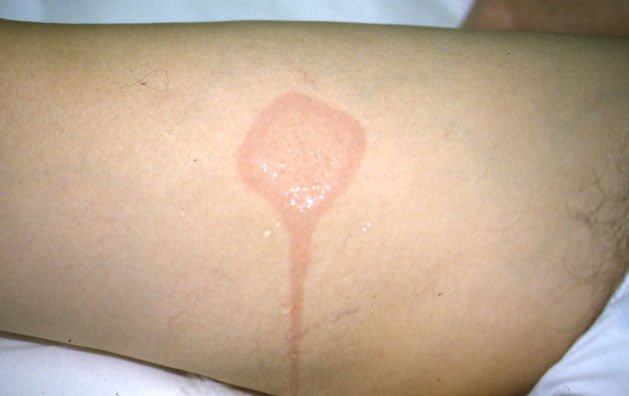
Cold urticaria is a skin disorder where affected patients develop urticarial rash after physical exposure to cold objects such as cold water, air, or foods. These symptoms can develop within minutes of exposure to cold stimulus.
There are two types of cold urticaria; acquired cold urticaria and familial cold urticaria. Familial type is a rare one. The symptoms of acquired type occur within minutes while those of familial type may take 24-48 hours.
What Triggers Cold Urticaria?
Cold urticaria can be triggered by many factors, few are listed below:
Cold air
Cold fluids
Swimming in cold water
Contact with cold surface
Ingestion of cold liquids and foods
Restriction of blood blow
Cold Urticarial Causes
As name suggest, cold urticarial is primarily caused by exposure to cold. However, why the cold stimulus causes such urticarial lesion is still unclear. It may also be due to secondary causes like blood disorders and infectious disease. Some condition that have been associated with secondary cold urticarial are:
- Lymphosarcoma
- Viral hepatitis
- Infectious mononucleosis
- Chickenpox
- Chronic lymphocystic leukaemia
- Cryoglobulinemia
- Hypothyroidism
- Leukocytoclastic vasculitis
- Drugs like penicillin, oral anticoagulants and antifungal
Symptoms of Cold Urticaria
Symptoms of cold urticaria show up within 3-5 minutes after exposure to cold stimulus. Within minutes of exposure red itchy wheals develops that may be localized to the area of exposure or generalized to whole body. Some may also experience severe systemic and anaphylactic reactions, which is often due to swimming in cold water. Systemic symptoms may include:
- Swelling on the pharynx, uvula, tongue and lips
- Difficulty in breathing
- Nausea, vomiting, stomachache and cramps
- Rapid irregular heart rate, low blood pressure, shock, collapse
- Headache, disorientation and unconsciousness
How is Cold Urticaria diagnosed?
The diagnosis is based on clinical features and cold stimulus test like “ice cube test” or “hand immersion test”. When ice cube is applied for 1-5 minutes; red swollen wheal may develop within minutes, if a person has cold urticarial. Beside this, complete blood counts and other related test must also be performed in order to exclude any underlying systemic condition.
Treatment for Cold Urticaria
Treatment includes strict avoidance of cold environment. Those with cold urticaria should always avoid cold foods, ice-creams, cold beverages and most importantly should strictly avoid swimming alone in cold water. Severe form of cold urticaria can be very fatal. Although antihistamines may be enough for mild rashes and itching, systemic reaction needs immediate medical attention and hospital admission. There are some reports of successful treatment with systemic corticosteroids, dapsone, oral antibiotics, ciclosporin, leukotriene antagonists and synthetic hormone danazol.
Another option is desensitization therapy with slowly and gradually exposing the skin to cold condition.
Ann
February 11, 2015 at 9:51 pmOk so if I google a multiplicity of skin rash images-shingles, urticaria, etc-they all give the same pictures. Can a dermatologist really tell the difference? My only reason for believing cold urticaria is I have experienced this 3 times on the same forearm and it is a 2inch by 2inch patch that happens to be the spot where my cold bottle of diet coke is held against my body after I buy it and return to my desk.